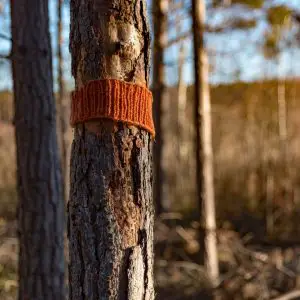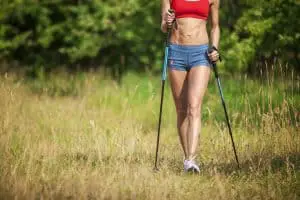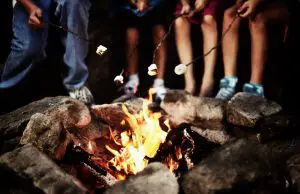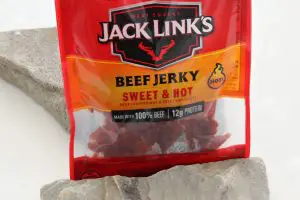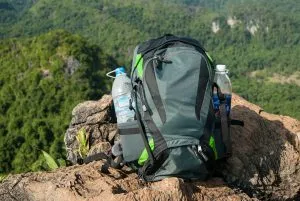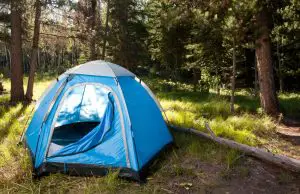Heat Stroke While Hiking: 7 Ways To Prevent It
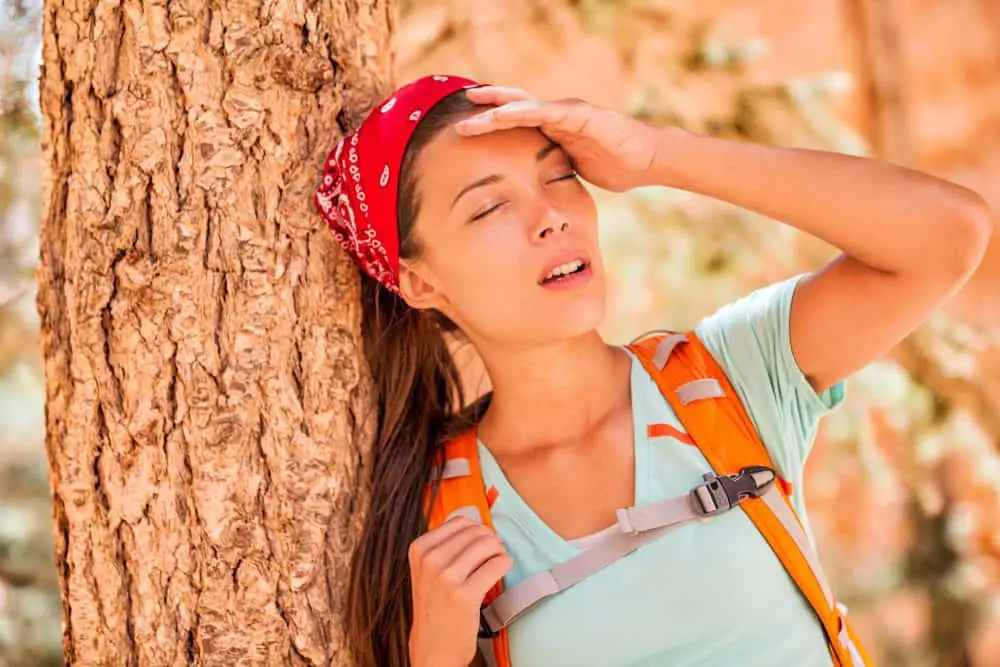
Who doesn’t love the sizzling, sweaty days of summer? Hikers are ready to hit the trails and explore the great outdoors. Summer is a glorious season to trek through nature with clear, sunny skies. But what about the dangers of a heat stroke while hiking?
Hiking on blistering hot summer days is risky for the unprepared. Unrelenting sunshine can leave you wilted like wildflowers. Summertime heat may make your blood boil until you feel like a cooked goose. As the mercury rises, so does your internal body temperature. If your core climbs to 103 degrees Fahrenheit or hotter, you’ll develop heat stroke.
Quick Links
So what exactly is Heat Stroke?
Heat stroke is a serious condition that can lead to unconsciousness or death. The warning signs of heat stroke include fast breathing, nausea, confusion, red skin, a throbbing headache, and more. Prolonged summer hikes can overheat your insides and send your vital organs into failure.
Does this mean hiking is dangerous and should be crossed off your summer to-do list? Absolutely not! Staying hidden inside an air-conditioned home all summer isn’t healthy either. Hikers simply have to protect their bodies from getting scorched. Here are seven tips to stay safe during your summer hikes.
Heat Stroke Symptoms: Explained
Now that you know the dangers, let’s go over a bit of the warning signs and symptoms of a Heat Stroke while hiking and what causes these symptoms to occur in the first place.
Fast breathing: Your body is working hard to cool itself down and is breathing faster as a result.
Nausea: You may feel sick to your stomach as your body starts to shut down.
Confusion: Your mind may start to fog as the heat takes its toll.
Red skin: The blood vessels in your skin dilate in an effort to release more heat, causing your skin to look red and flushed.
A throbbing headache: This can be a sign of dehydration or heat exhaustion, which is a precursor to heat stroke.
Dizziness or lightheadedness: You may feel faint or unsteady as your body temperature rises.
Loss of consciousness: This is the most severe symptom of heat stroke and requires immediate medical attention.

7 Ways to Prevent Heat Stroke while Hiking
1. Shield Your Skin
Do you think less clothes will keep you cooler? Guess again. Wearing tank tops and shorts leaves your skin totally unprotected. Sun rays will penetrate and burn your skin, thus warming your temperature. Though it seems illogical, long-sleeved shirts and pants are essential for summer hikes.
Choose a loose, breathable fabric that wicks away your sweat and allows airflow. Polyester, nylon, and Merino wool are superior to cotton. Avoid dark colors like black and navy that absorb heat. Picking light-colored hiking attire helps reflect the sun and spot ticks. Top your head with a hat and a pair of sunglasses. Cover exposed skin with big dollops of sunscreen.
Some personal recommendations are:
Even if it’s a bit warm out, I still like to cover my body to have protection against ticks. Ticks are nasty little creatures, and typically the best protection is prevention.
2. Scout Out Hiking Trails
Summer hikes shouldn’t be spur-of-the-moment decisions. Invest time in plotting a safe, weather-appropriate path. Certain hiking trails simply aren’t safe in extreme heat. Avoid wide-open trails with little cover from the blistering sun. Instead, choose wooded trails with a canopy of tall trees. Hiking along rivers and lakes can help soak up a refreshing breeze. Temperatures also tend to be degrees cooler at higher mountain altitudes.
Plan out your trek to maximize your time of shade. Always bring along a map or navigation device to avoid getting lost in the blazing heat. Stay on the beaten path where people are present in case heat stroke symptoms strike.
3. Increase Your Fluid Intake
Stay safe during your summer hikes by carrying around water like a cactus. Heat stroke and dehydration usually go hand in hand. In the summer heat, you’ll be dripping with sweat. Danger lurks if you don’t replenish the water lost from profuse sweating.
It’s best to drink about one half-liter of water every 60 minutes or so. Have an insulated bottle with cold water handy for steady sipping. Avoid quenching your thirst with huge gulps of water. The tsunami of fluid could upset your system and make you nauseous. Be diligent about drinking plain or fortified water with electrolytes. Pack some purification tablets to filter non-drinking water in case you run out too.
4. Chew on Salty Snacks
Snacking during exercise seems counterintuitive. Taking in calories when you’re trying to burn calories doesn’t make much sense. However, munching is imperative on hot summer hikes. The perspiration popping up all over your body is extra salty. Long periods of sweating will deplete your system of much-needed sodium. Low salt levels are one major contributing factor to heat stroke.
When hiking, take frequent bites of salty snacks. Pack baggies with peanuts, pretzels, or plain potato chips. Get creative with blending your own trail mix. Choose sports drinks or electrolyte drink mixes to restock salt. Fruits like bananas and apples also help replenish potassium.
5. Pace Yourself
Summer hikes aren’t races to the finish line. You’ll still get an epic cardio workout without rushing. Don’t overdo it and drain your batteries halfway through. Consistently plod along at a slow to moderate pace, especially if you are a beginner hiker. Aim for about two to three miles per hour. Match your footsteps to your breathing to ensure a good oxygen flow.
When ascending steeper trail sections, lean on trekking poles to preserve energy. Stay safe from heat stroke by taking breaks regularly too. Rest a few moments under a shaded tree. Use the reprieve to hydrate and slow your heartbeat. Make breaks more fun by shooting some stunning nature shots for Instagram.
6. Switch Your Hiking Schedule
During the winter and spring, you’re likely used to trekking the trails during the day. Hiking at high noon in 90-plus weather conditions isn’t smart though. Avoid hiking during the hours of 11 a.m. and 4 p.m. like the plague. Rework your itinerary to hike around dawn or after dusk. In this case, the early bird catches cooler air. Summer mornings are a great time to hit the trails and watch the sunrise.
If you’re a night owl who prefers sleeping in, wait until the sun starts going down. Summer days are longer, so you’ll have plenty of time before there’s pitch blackness. Remember to spritz bug spray because mosquitoes and other pests also prefer these times.
7. Pack Lightly
Summer hikes are hard enough without lugging a laden knapsack. Avoid weighing yourself down like a burdened pack mule. You don’t want to face heat stroke or back pain. Thus, lighten your load by packing only the essentials. Examine your current setup and eliminate any unnecessary items. Learn from my mistakes – I had a backpack filled with useless trinkets during a blistering hot summer day in Yosemite. Let me tell you, it was not a fun experience.
Hot days aren’t the time to bring along big books and heavy coats. Seek out smaller, lighter gear that’s easier to heave. Pick a pack with mesh backing to improve airflow too. Don’t go overboard with tossing items, though. Double-check that you still have enough water, snacks, sunblock, bug spray, and first aid products. Always pack extra socks to remove sweaty pairs and prevent blisters.
How do you treat Heat Stroke while hiking?
What if you develop heat stroke on a sweltering hot day? Seek out emergency medical care immediately. If you’re struggling to breathe, becoming disoriented, or no longer sweating, call 911. Cool yourself off while you’re waiting for first responders.
Stop moving and find a shady nook to rest out of the sun. Sip water slowly to avoid vomiting. Rip your clothing and douse the fabric in cool water as a makeshift ice pack for your forehead. Quick thinking will help you hang on until paramedics arrive in an air-conditioned ambulance.
You’ll be given an intravenous (IV) line and taken to the hospital. To avoid this harrowing scene, follow the above seven tips and stay safe during your summer hikes. Heat stroke is an entirely preventable summertime danger.

